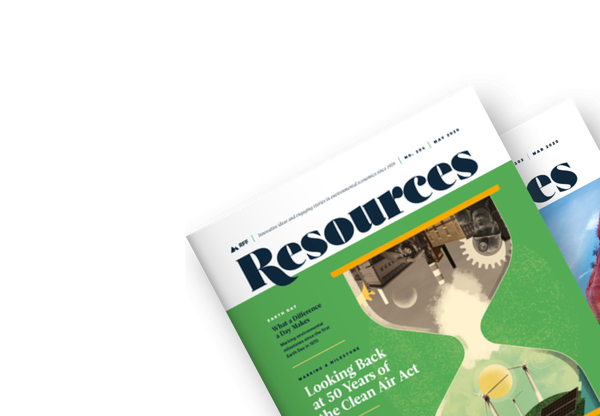
October 1996 / Magazine Issues
Issue 125: Cutting-edge Thoughts / Real-world Problems
For more than four decades, Resources for the Future has enjoyed a solid reputation for creative thinking on important problems. Indeed, we are widely—and even formally—credited with having brought into existence the scholarly subdiscipline of environmental and resource economics and applying it to emerging policy issues.
I am gratified whenever individuals and groups come to RFF seeking help with vexing new environmental and resource problems. So it is that in this issue of Resources Terry Davies and Nicole Darnall recount their study of the environmental problems of the District of Columbia, conducted this past spring at the request of the Summit Fund. (Similarly, Davies is helping an organization called Project Learning Tree® to develop a high-school curriculum on environmental risk assessment—see page 4).
RFF Senior Fellow Alan Krupnick, coauthor of this issue's feature article on revising the ozone standard, draws from his experience as cochair of the ozone subcommittee of the Federal Clean Air Act Advisory Committee, a group assisting EPA in its work. And when legislation was passed this summer attempting to resolve a forty-year-old problem with food safety standards, people quickly began turning to RFF's Jim Wilson, former president of the Society for Risk Analysis, for expert assessment of its merits. He shares his views with Resources readers beginning on page 14.
Even our more speculative and open-ended research can be applied to help solve real-world problems. Many people scarcely saw where we were coming from (or going to) when RFF researchers first began combining economic science with matters of ecology. The kind of impact this sort of pioneering work can deliver over time shows up in the story on page 18 concerning RFF's early analysis of the radio spectrum from an economic perspective. (The article includes reflections from RFF's Molly Macauley, a leading light on another analytical frontier—space economics).
Our commitment to the future is further demonstrated in a number of the shorter news items in this issue of Resources that show RFF's work on the people side of problem-solving. Again this past summer, we invited a group of the nation's bright young graduate and undergraduate students to spend time here working alongside RFF's resident analysts and researchers. And two hotly recruited new Ph.D.s are presently settling into our community of scholars. A group of us are on the road, too, teaching a course on environmental economics and policy at Princeton University—yet another instance of RFF's willing response to a call on our institutional resources.
I hope you will enjoy and benefit from reading about all these activities and more in the fall issue of Resources.
— Paul R. Portney

